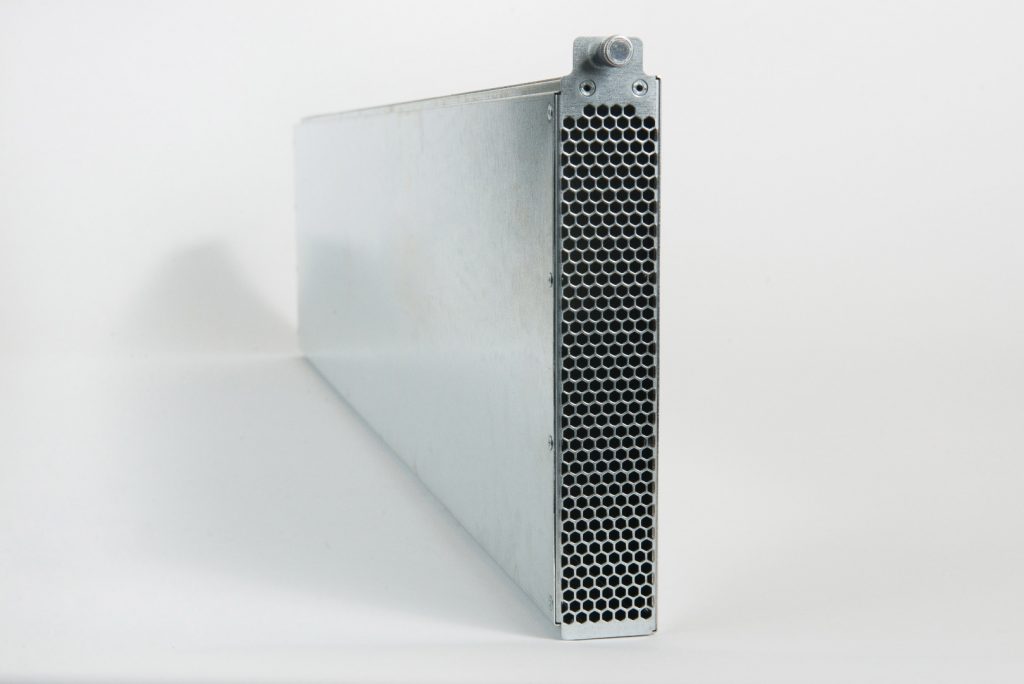Open19, the LinkedIn-Born Data Center Standard, Kicks Off a Second ActOpen19, the LinkedIn-Born Data Center Standard, Kicks Off a Second Act
The project has joined the Linux Foundation, with a version 2 in the works, which will increase power density and bandwidth, add liquid cooling options.

Looking from outside, it may have felt that Open19, the open data center hardware standard and foundation created by LinkedIn’s infrastructure team a few years ago, was destined to quietly wind down, following the absorption of LinkedIn by Microsoft, an OCP shop throughout, and the subsequent announcement that LinkedIn workloads will move to Azure.
The key people behind it had gone on to do new things. Yuval Bachar, who led LinkedIn’s data center infrastructure architecture and strategy, took a principal hardware architect job with Microsoft Azure (a job he left last month to build his own startup); Zaid Kahn, who had worked side-by-side with Bachar at LinkedIn as head of infrastructure engineering, became general manager for cloud AI and advanced systems engineering at Microsoft; Zac Smith, co-founder and former CEO of Packet, the bare-metal server provider that became the second Open19 user after LinkedIn, sold Packet to Equinix and went on to lead the colocation giant’s new bare-metal business.
But, as it turns out, Open19 is not winding down. Its supporters have been quietly working behind the scenes, writing its second act.
If you’re not familiar with Open19, here’s some useful reading:
Open19 Joins the Linux Foundation
“We were not actually sitting still, doing nothing,” Bachar told DCK in an interview. They were working on the second version of the standard – Open19 “V2” – and arranging for the project to become part of the Linux Foundation. Work on the latter is now complete, and on Wednesday the Linux Foundation announced that it’s now hosting the Open19 Foundation.
The Linux Foundation provides the necessary infrastructure for Open19 to become appealing to more large data center operators and for its development to align with the development of certain software projects that are also part of the Linux Foundation, Smith said.

Yuval Bachar, former principal engineer, data center architecture, LinkedIn, and president and chairman of the Open19 Foundation, speaking at the foundation's 2018 summit.
Some tier-two cloud service providers and SaaS companies who were already members of the Linux Foundation were interested in combining other LF projects they were involved in with Open19, he explained.
Bachar has joined the Linux Foundation as an Open19 Foundation Fellow to lead the effort.
Cisco and Equinix Champion Open19
Equinix continues to deploy Open19 hardware in Equinix Metal locations, becoming its second big end user, Smith said. If a customer has specific non-Open19 hardware needs, the bare-metal service will accommodate them, but if they don’t have an opinion, Open19 is the default.
“About 40 percent of our fleet is Open19-based and continues to be an area of investment for us,” he said.
A more recent big-company arrival is Cisco, which has joined the Open19 Foundation as a “premier member.” Cisco is championing Open19 as both a vendor and an end user of the standard, Bachar said. The networking giant has been “very active in our v2 specification,” Smith added.
Open19 has had another major vendor champion, Hewlett Packard Enterprise, from its early days. HPE has designed Open19-compliant hardware but hasn’t rolled out an official product. “HPE struggled a little bit with finding customers” for the gear but will remain involved, Bachar said.
Several European tier-two cloud providers have adopted Open19 hardware, Smith said, but he wasn’t in a position to name them.
What Will Be New in Open19 V2?
The second version of Open19, whose development is still in progress, will aim to address all the challenges of V1 and add new capabilities. Bachar and his colleagues have been “having significant discussions with LinkedIn on lessons learned” by running Open19 in production at scale. The company has deployed some 60,000 Open19 servers, he said.

Open19 server
Some of the biggest new capabilities will be doubling power per server, adding a liquid-cooling option to the standard, and enhancing network connectivity.
A single half-RU-width Open19 V1 server brick is 400W, or 800W per RU. The second version will allow for 1,600W per RU. Open19 V2 will be better aligned with newer power generation, power conversion, and power distribution technologies.
It will include options for a variety of liquid-cooling approaches, including single-phase and two-phase immersion cooling.
There will be no external cabling required. Open19 V1 servers have blind-mate connectors for power and networking, requiring no cabling in most cases, but some end users found that they needed to hook up additional cables. Those won’t be necessary in V2.
Network bandwidth per server will be either doubled or quadrupled, Bachar said. That has yet to be decided.
The things that won’t change are the form factor, the blind-mate connectivity, and the power shelf-based power distribution, he said. “V2 is going to be V1 on steroids.”
About the Author
You May Also Like







